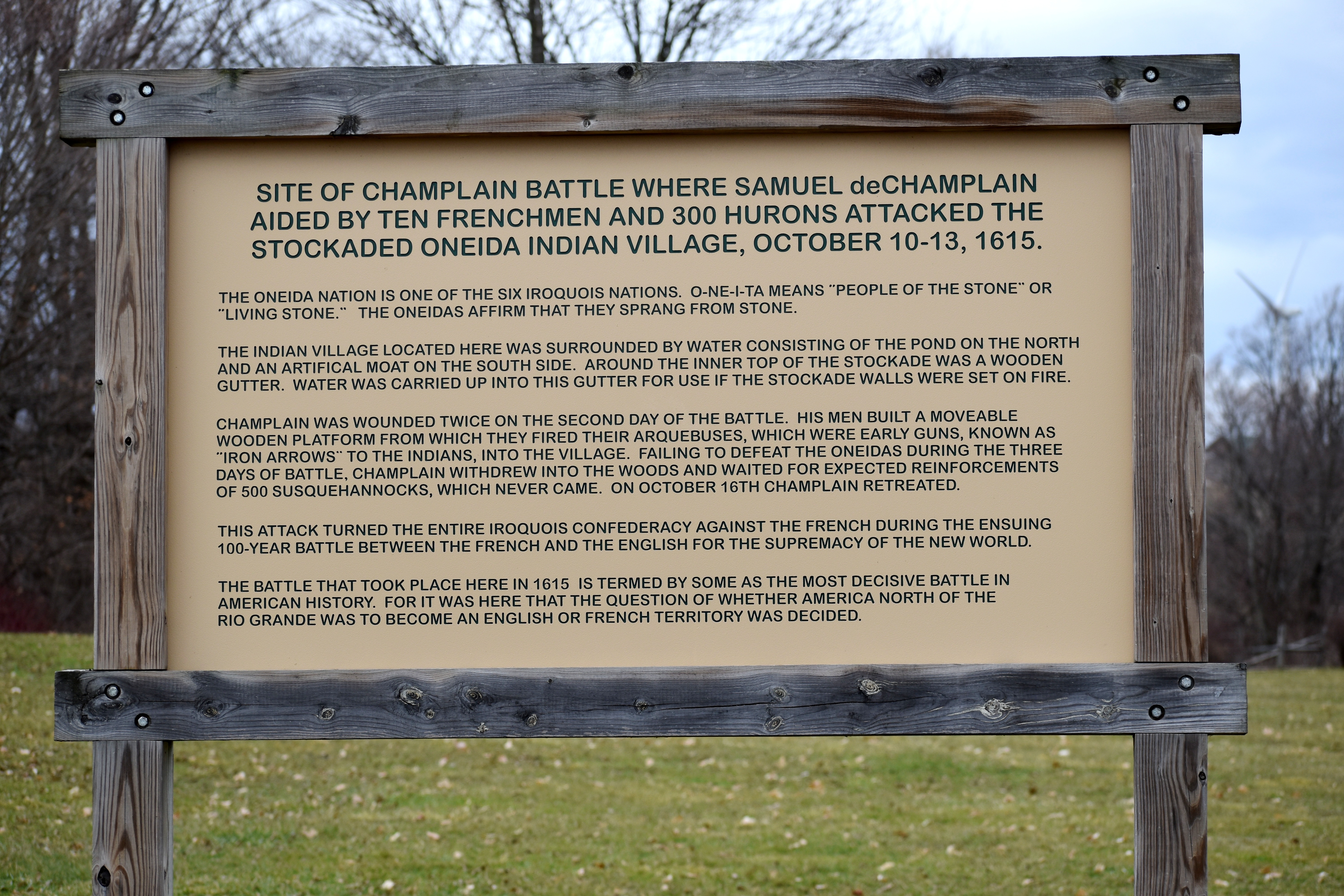Photograph as originally submitted to
this page in the Historical Marker Database
www.HMdb.org.
Click on photo to resize in browser. Scroll down to see metadata.
Photographer: Mollie
Taken: January 11, 2020
Caption:
Adjacent Champlain Battle Sign | Additional Description:
Site of Champlain Battle where Samuel de Champlain aided by ten Frenchmen and 300 Hurons attacked the stockaded Oneida Indian Village, October 10-13, 1615.
The Oneida Nation is one of the six Iroquois Nations. O-NE-I-TA means "People of the Stone" or "Living Stone." The Oneidas affirm that they sprang from stone.
The Indian village located here was surrounded by water consisting of the pond on the north and an artificial moat on the south side. Around the inner top of the stockade was a wooden gutter. Water was carried up into this gutter for use if the stockade walls were set on fire.
Champlain was wounded twice on the second day of the battle. His men built a moveable wooden platform from which they fired their arquebuses, which were early guns, known as "iron arrows" to the Indians, into the village. Failing to defeat the Oneidas during the three days of battle, Champlain withdrew into the woods and waited for expected reinforcements of 500 Susquehannocks, which never came. On October 16th, Champlain retreated.
This attack turned the entire Iroquois Confederacy against the French during the ensuing 100-year battle between the French and the English for the supremacy of the New World.
The battle that took place here in 1615 is termed by some as the most decisive battle in American history. For it was here that the question of whether America north of the Rio Grande was to become an English or French territory was decided.Submitted: January 11, 2020, by Mollie of Syracuse, New York.
Database Locator Identification Number: p507340
File Size: 5.545 Megabytes
To see the metadata that may be embedded in this photo, sign in and then return to this page.
